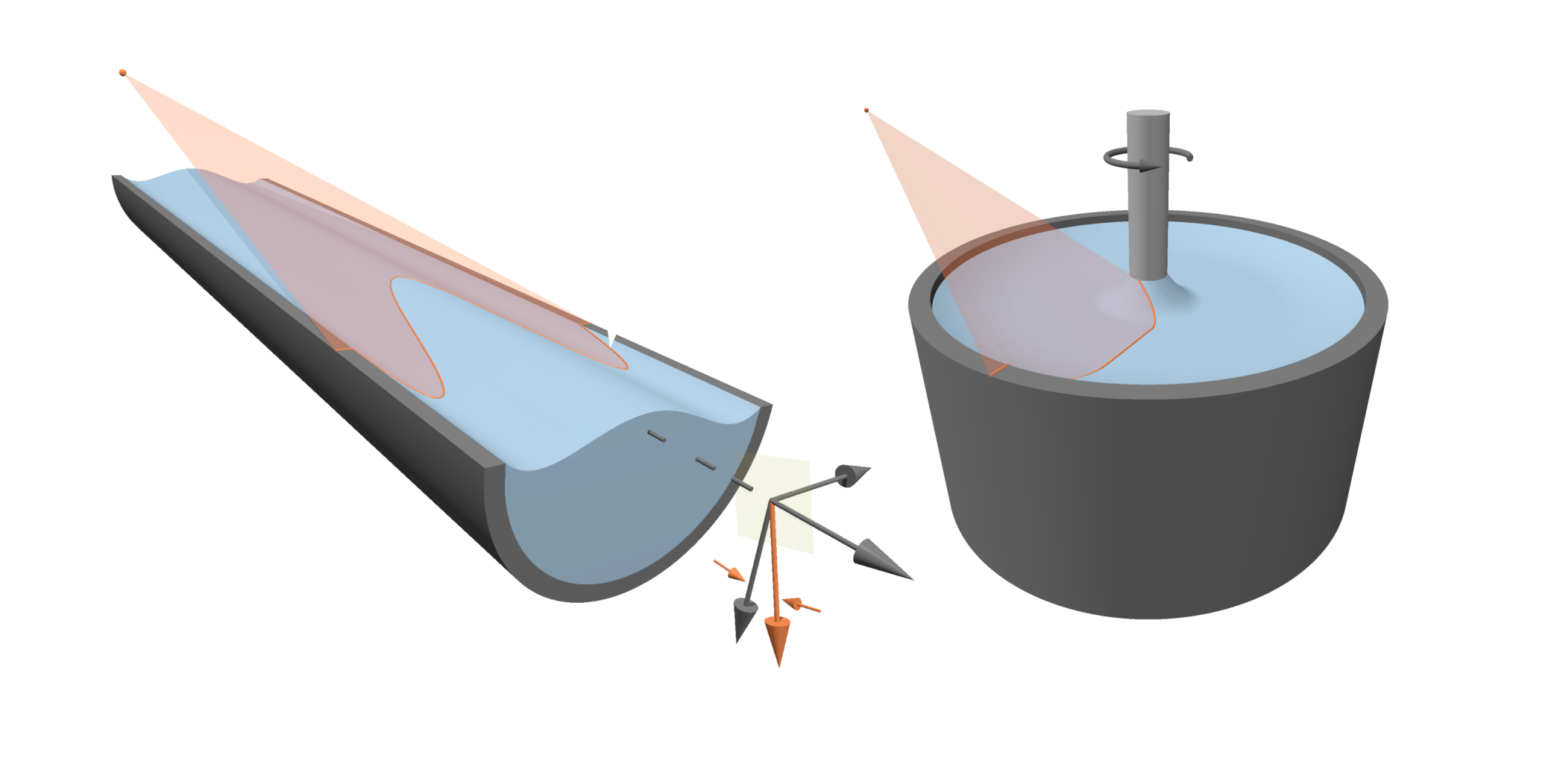Complex Fluid Dynamics
Butler Research Group


Circular
trough tilted
at angle β
Laser sheet and line
tracing the interface
deformation
Rotating
rod
β
g
Normal stresses within flowing suspensions of non-colloidal particles are thought to control the distribution of particles, yet measuring the normal stresses of suspensions remains challenging. The relatively small value of the normal stresses and the large particle sizes both pose difficulties for standard rheological devices, and this is particularly true for suspensions of high aspect ratio fibers.
An alternative approach to standard rheometers is to use free surface flows. The deformation of the interface between the flowing suspension and air in an open channel (left) and in a Weissenberg rheometer (right) are related to the first and second normal stress differences. As illustrated, a laser sheet intersecting the interfaces at a low angle can be viewed from above the flowing surface to determine the interface shape and then estimate the normal stresses.
An example image of the deformed interface as viewed from above the channel is shown on the right from our experiments on concentrated suspensions of rigid fibers. In this case, a total of nine laser sheets were used to trace the deformation, and the maximum deformation was found to be 1.3 mm within the circular trough of diameter 2.58 cm. We related the deformation to the normal stress differences. The normal stresses are a strong function of concentration, and normal stresses predicted by simulations were found to agree with the experimental results over a wide range of conditions.

1.3 mm
2.58 cm
Relevant Publications:

